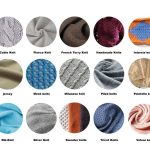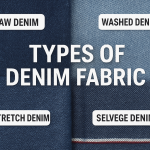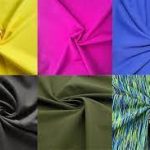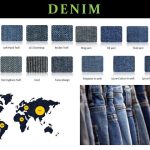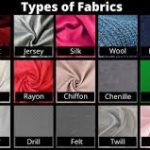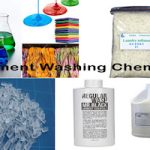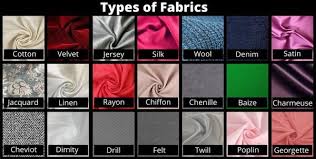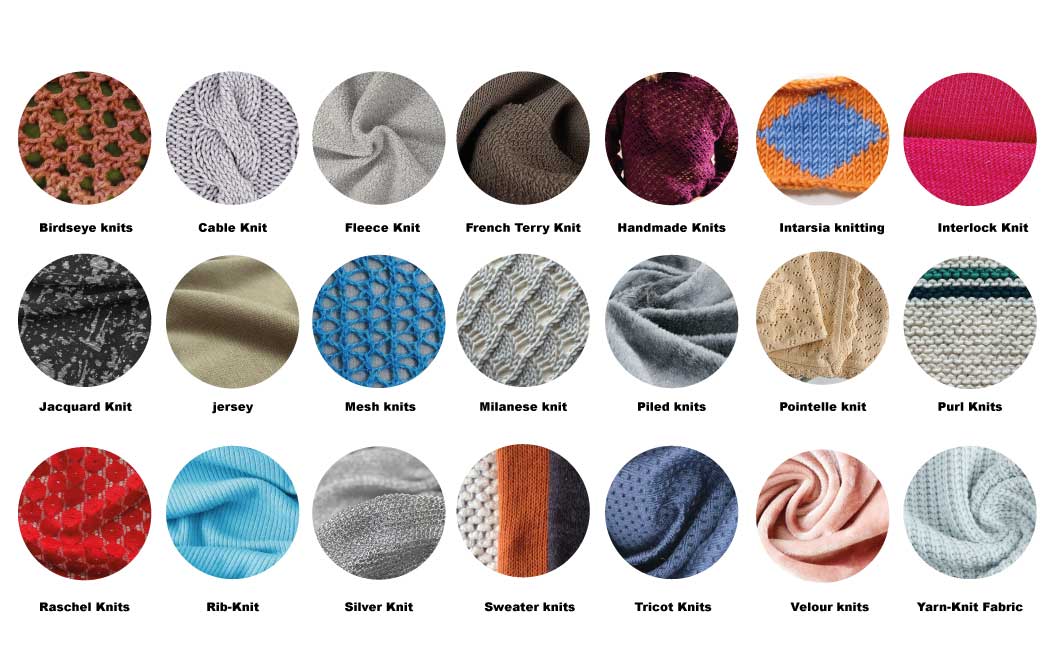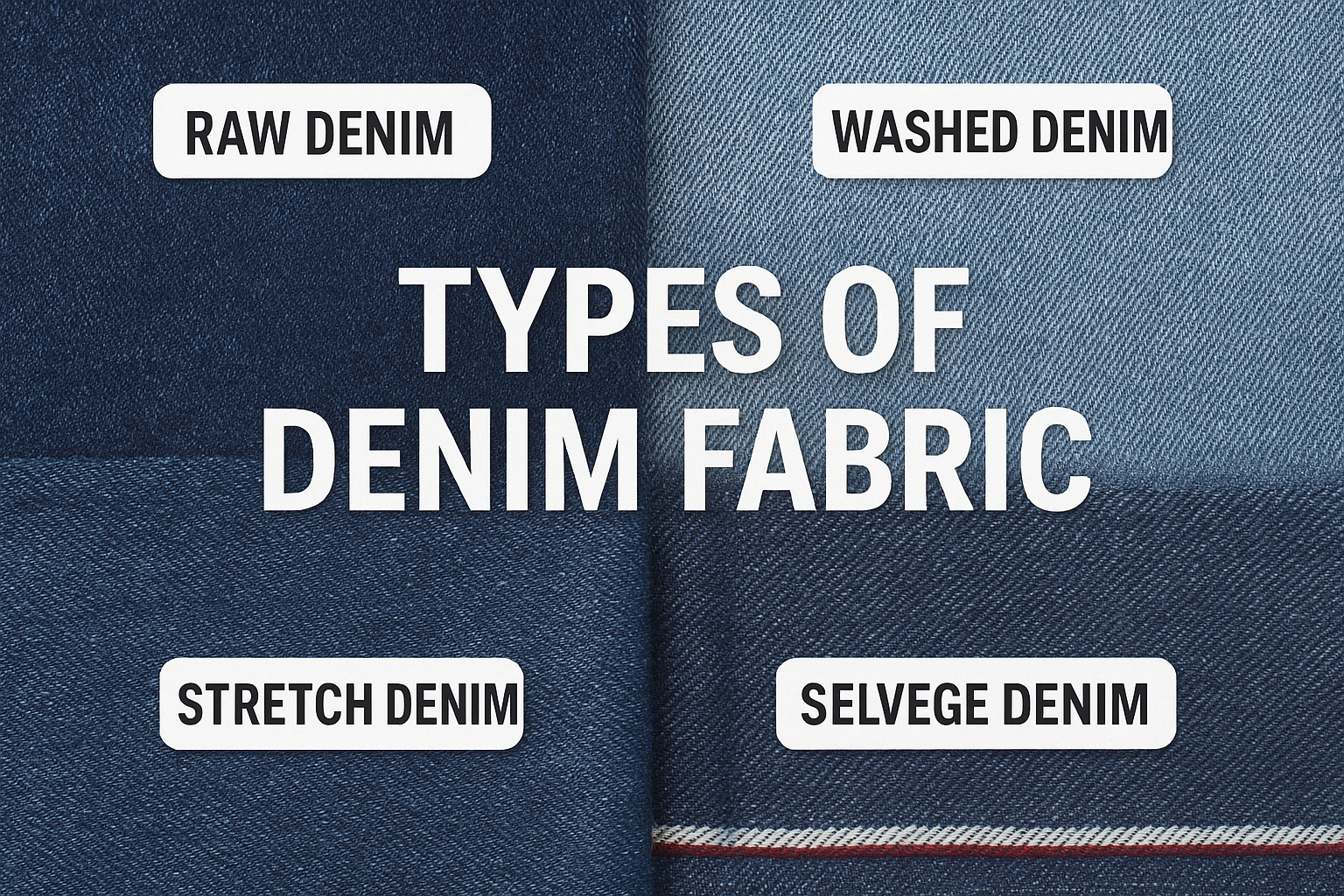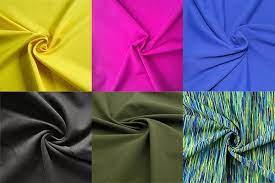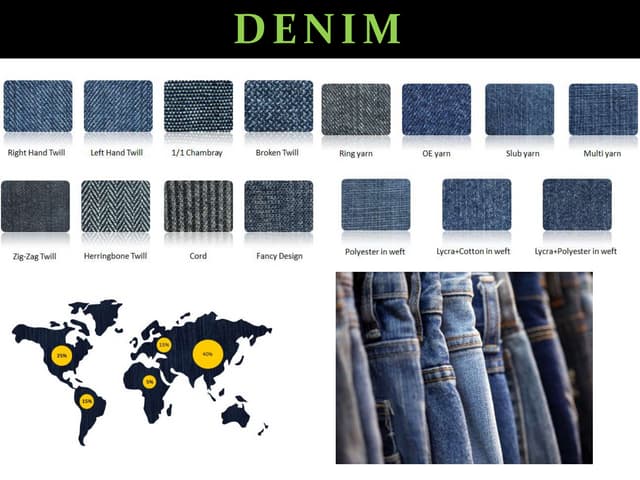Comprehensive Guide to Different Types of Fabrics
Introduction
In the textile and garment industry, fabric is the foundation of design, comfort, and functionality. Each fabric has unique characteristics determined by its fiber content, yarn structure, weave or knit, and finishing techniques. Understanding fabrics is essential for designers, manufacturers, and consumers alike because the choice of fabric affects durability, drape, breathability, appearance, and care requirements.
This guide provides a complete overview of different types of fabrics, including natural, synthetic, blended, knitted, and specialty fabrics. You will learn their properties, uses, advantages, disadvantages, and care instructions.
1. Cotton Fabrics
Cotton is one of the most widely used natural fibers in the world. It is soft, breathable, and comfortable, making it ideal for garments worn in daily life.
1.1 Plain Cotton
Plain cotton is smooth, lightweight, and highly absorbent.
-
Properties: Soft, breathable, hypoallergenic, good moisture absorption.
-
Uses: Shirts, dresses, undergarments, handkerchiefs, home textiles.
-
Advantages: Comfortable, natural, easy to dye, durable.
-
Disadvantages: Wrinkles easily, may shrink if not pre-shrunk.
-
Care: Machine washable in cold water, ironable on medium heat.
1.2 Denim
Denim is a twill-weave cotton fabric known for durability.
-
Properties: Heavy, strong, resistant to wear, may include stretch fibers.
-
Uses: Jeans, jackets, workwear, skirts.
-
Advantages: Durable, suitable for casual and heavy-duty wear.
-
Disadvantages: Can be stiff initially; may fade over time.
-
Care: Wash inside out, avoid high heat; stretch denim may require gentle handling.
1.3 Poplin / Broadcloth
A lightweight cotton fabric with a smooth surface.
-
Properties: Fine, smooth, tightly woven.
-
Uses: Dress shirts, blouses, lightweight dresses.
-
Advantages: Easy to wash, crisp appearance, breathable.
-
Disadvantages: Wrinkles easily, less insulating.
-
Care: Machine wash cold, iron on medium heat.
1.4 Flannel
Flannel is a soft, brushed cotton fabric ideal for warmth.
-
Properties: Soft, slightly fuzzy, insulating.
-
Uses: Winter shirts, bedding, pajamas, scarves.
-
Advantages: Soft, warm, comfortable.
-
Disadvantages: May pill with frequent washing.
-
Care: Machine wash cold, tumble dry low.
2. Linen Fabrics
Linen is a natural fiber made from the flax plant. It is valued for its strength, breathability, and natural luster.
2.1 Plain Linen
-
Properties: Strong, lightweight, breathable, textured surface.
-
Uses: Summer clothing, home textiles, curtains, upholstery.
-
Advantages: Cool and comfortable in hot weather, durable.
-
Disadvantages: Wrinkles easily, may shrink without proper treatment.
-
Care: Gentle machine wash, iron while damp, avoid high heat.
2.2 Linen Blends
-
Properties: Linen blended with cotton or synthetics for improved softness and reduced wrinkling.
-
Uses: Casual wear, office wear, summer dresses.
-
Advantages: Less prone to creasing, softer hand feel.
-
Disadvantages: May slightly reduce the natural luster of linen.
3. Silk Fabrics
Silk is a luxurious natural protein fiber produced by silkworms. It is prized for its smooth texture, shine, and draping qualities.
3.1 Mulberry Silk
-
Properties: Smooth, shiny, fine, soft.
-
Uses: Sarees, evening gowns, scarves, high-end clothing.
-
Advantages: Lightweight, hypoallergenic, natural sheen.
-
Disadvantages: Expensive, requires delicate care.
-
Care: Dry clean recommended, avoid direct sunlight and water exposure.
3.2 Tussar / Raw Silk
-
Properties: Slightly coarse, textured, natural luster.
-
Uses: Traditional garments, sarees, decorative fabrics.
-
Advantages: Breathable, unique texture, comfortable for summer wear.
-
Disadvantages: Less smooth than mulberry silk; may be prone to fraying.
-
Care: Gentle dry cleaning, avoid rough handling.
3.3 Chiffon / Georgette Silk
-
Properties: Lightweight, sheer, flowing, semi-transparent.
-
Uses: Evening gowns, dupattas, scarves, overlays.
-
Advantages: Elegant drape, soft hand feel.
-
Disadvantages: Delicate, prone to snagging.
-
Care: Hand wash in cold water or dry clean, avoid wringing.
4. Wool Fabrics
Wool is a natural protein fiber obtained from sheep and other animals. It is known for its warmth, elasticity, and resilience.
4.1 Merino Wool
-
Properties: Fine, soft, breathable, lightweight yet insulating.
-
Uses: Sweaters, scarves, base layers, winter wear.
-
Advantages: Natural insulation, moisture-wicking, durable.
-
Disadvantages: Can shrink if washed in hot water.
-
Care: Hand wash or machine wash in cold wool cycle, lay flat to dry.
4.2 Cashmere
-
Properties: Extremely soft, luxurious, lightweight.
-
Uses: Shawls, high-end sweaters, scarves.
-
Advantages: Soft, warm, elegant drape.
-
Disadvantages: Expensive, delicate, prone to pilling.
-
Care: Dry clean preferred; hand wash gently if necessary.
4.3 Felt
-
Properties: Dense, non-woven, insulating.
-
Uses: Hats, crafts, industrial applications.
-
Advantages: Strong, insulating, moldable.
-
Disadvantages: Cannot be washed aggressively; may shrink.
-
Care: Spot clean or dry clean; avoid soaking.
5. Synthetic Fabrics
Synthetic fibers are man-made, derived from petrochemicals. They are valued for durability, elasticity, and low maintenance.
5.1 Polyester
-
Properties: Durable, wrinkle-resistant, non-absorbent, quick-drying.
-
Uses: Dresses, shirts, home textiles, sportswear.
-
Advantages: Low maintenance, holds color well.
-
Disadvantages: Less breathable, prone to static.
-
Care: Machine washable, tumble dry low.
5.2 Nylon
-
Properties: Strong, elastic, smooth, lightweight.
-
Uses: Activewear, hosiery, swimwear, jackets.
-
Advantages: Resistant to abrasion, quick-drying.
-
Disadvantages: Less breathable, may retain odors.
-
Care: Machine wash cold, air dry preferred.
5.3 Acrylic
-
Properties: Wool-like, lightweight, soft.
-
Uses: Sweaters, knitwear, blankets.
-
Advantages: Affordable alternative to wool, warm.
-
Disadvantages: Can pill; less durable than wool.
-
Care: Machine wash cold, lay flat to dry.
5.4 Spandex / Elastane
-
Properties: Highly stretchable, elastic.
-
Uses: Sportswear, leggings, swimwear.
-
Advantages: Comfortable, shape-retaining, flexible.
-
Disadvantages: Can degrade under heat and chlorine.
-
Care: Hand wash or gentle machine wash; avoid high temperatures.
6. Blended Fabrics
Blended fabrics combine natural and synthetic fibers to take advantage of both.
6.1 Cotton-Polyester
-
Properties: Combines softness of cotton with durability of polyester.
-
Uses: Shirts, uniforms, everyday wear.
-
Advantages: Reduced wrinkling, easier care, cost-effective.
-
Disadvantages: Less breathable than 100% cotton.
6.2 Wool Blends
-
Properties: Wool mixed with cotton, polyester, or acrylic.
-
Uses: Suits, jackets, winter clothing.
-
Advantages: Warmth of wool, durability of synthetics, less shrinkage.
-
Disadvantages: May lose some softness or luster.
6.3 Silk Blends
-
Properties: Silk combined with cotton or synthetics.
-
Uses: Formal dresses, sarees, lightweight gowns.
-
Advantages: Natural sheen with easier care, improved durability.
-
Disadvantages: May lose pure silk texture.
7. Knitted Fabrics
Knitted fabrics are made by interlooping yarns, giving them stretch and elasticity.
7.1 Jersey
-
Properties: Soft, stretchy, lightweight, smooth on one side.
-
Uses: T-shirts, dresses, casual wear.
-
Advantages: Comfortable, easy to maintain.
-
Disadvantages: Can lose shape over time.
-
Care: Machine wash cold, gentle cycle.
7.2 Rib Knit
-
Properties: Elastic, textured pattern, strong recovery.
-
Uses: Cuffs, collars, sweaters, sportswear.
-
Advantages: Retains shape, comfortable fit.
-
Disadvantages: Can be thicker and heavier.
-
Care: Hand wash or gentle machine cycle.
7.3 Interlock Knit
-
Properties: Double-knit, smooth, durable.
-
Uses: Activewear, children’s clothing.
-
Advantages: Comfortable, stable, resistant to curling.
-
Disadvantages: Less breathable than single-knit fabrics.
8. Specialty / Technical Fabrics
These fabrics are designed for specific functional or aesthetic purposes.
8.1 Denim Stretch
-
Properties: Denim with elastane for flexibility.
-
Uses: Jeans, casual wear.
-
Advantages: Comfortable, allows movement.
-
Disadvantages: Can lose elasticity over time.
8.2 Microfiber
-
Properties: Ultra-fine synthetic fibers, soft, water-resistant.
-
Uses: Cleaning cloths, sportswear, outerwear.
-
Advantages: Lightweight, quick-drying.
-
Disadvantages: May retain odors if not washed properly.
8.3 Waterproof Fabrics (Gore-Tex, PU Coated)
-
Properties: Water-resistant, breathable.
-
Uses: Raincoats, outdoor gear.
-
Advantages: Keeps wearer dry while allowing sweat to escape.
-
Disadvantages: Can be expensive, requires special care.
8.4 Canvas / Duck Cloth
-
Properties: Heavy, durable, plain weave.
-
Uses: Bags, tents, upholstery.
-
Advantages: Strong, long-lasting.
-
Disadvantages: Rough texture, heavy.
-
Care: Spot clean or machine wash; air dry.
9. Fabric Care Tips
Proper care is essential to extend the life of fabrics:
-
Natural fibers: Wash in cold water, avoid bleach, iron carefully.
-
Synthetics: Avoid high heat, tumble dry low, use mild detergents.
-
Delicate fabrics (silk, wool): Dry clean or hand wash gently.
-
Blended fabrics: Follow care instructions on the label, test small areas for colorfastness.
Table: Different Types of Fabrics – Properties, Uses & Care
| Fabric Type | Properties | Common Uses | Advantages | Disadvantages | Care Instructions |
|---|---|---|---|---|---|
| Cotton (Plain) | Soft, breathable, absorbent | Shirts, dresses, undergarments, home textiles | Comfortable, hypoallergenic, easy to dye | Wrinkles easily, may shrink | Machine wash cold, iron medium heat |
| Denim | Twill weave, durable, heavy | Jeans, jackets, workwear | Strong, long-lasting | Can fade, stiff initially | Wash inside out, gentle cycle, avoid high heat |
| Poplin / Broadcloth | Fine, smooth, lightweight | Shirts, blouses, dresses | Crisp, breathable, easy care | Wrinkles easily | Machine wash cold, iron medium heat |
| Flannel | Soft, brushed, insulating | Winter wear, bedding, pajamas | Warm, soft texture | May pill over time | Machine wash cold, tumble dry low |
| Linen (Plain) | Strong, breathable, textured | Summer clothing, home textiles, upholstery | Cool, durable | Wrinkles easily, needs ironing | Gentle wash, iron while damp |
| Linen Blends | Linen + cotton/synthetics | Casual & office wear | Softer, less wrinkling | Slightly reduces natural luster | Machine wash cold, iron low |
| Mulberry Silk | Smooth, shiny, luxurious | Sarees, gowns, scarves | Soft, hypoallergenic, elegant | Expensive, delicate | Dry clean preferred |
| Tussar / Raw Silk | Textured, natural luster | Traditional dresses, sarees | Unique texture, breathable | Coarser, frays easily | Gentle dry clean |
| Chiffon / Georgette Silk | Lightweight, sheer, flowing | Evening wear, scarves | Elegant drape, soft | Very delicate | Hand wash cold or dry clean |
| Merino Wool | Fine, soft, insulating | Sweaters, scarves, winter wear | Moisture-wicking, durable | Can shrink if hot water used | Hand wash cold, lay flat to dry |
| Cashmere | Soft, lightweight, luxurious | Shawls, sweaters | Warm, elegant drape | Expensive, delicate | Dry clean or gentle hand wash |
| Felt | Dense, non-woven, insulating | Hats, crafts, industrial | Strong, moldable | Cannot be washed aggressively | Spot clean or dry clean |
| Polyester | Durable, wrinkle-resistant | Dresses, shirts, home textiles | Low maintenance, colorfast | Less breathable | Machine wash cold, tumble dry low |
| Nylon | Strong, elastic, smooth | Activewear, hosiery | Abrasion-resistant, quick-drying | Less breathable | Machine wash cold, air dry |
| Acrylic | Wool-like, lightweight | Sweaters, knitwear, blankets | Affordable wool alternative | Can pill | Machine wash cold, lay flat to dry |
| Spandex / Elastane | Highly stretchable | Sportswear, leggings, swimwear | Shape-retaining, flexible | Degrades with heat/chlorine | Hand wash, avoid high heat |
| Cotton-Polyester Blend | Soft & durable | Shirts, uniforms, everyday wear | Easy care, reduced wrinkling | Less breathable than cotton | Machine wash cold, tumble dry low |
| Wool Blends | Wool + synthetic or cotton | Suits, jackets, winter clothing | Warm, durable, less shrinkage | May lose softness | Dry clean or gentle wash |
| Silk Blends | Silk + cotton/synthetic | Formal dresses, sarees | Lustrous, easier care | May lose pure silk feel | Dry clean or gentle hand wash |
| Jersey Knit | Soft, stretchy, lightweight | T-shirts, casual wear | Comfortable, flexible | Can lose shape over time | Machine wash cold, gentle cycle |
| Rib Knit | Elastic, textured | Cuffs, collars, sweaters | Retains shape, comfortable | Thicker, heavier | Hand wash or gentle machine wash |
| Interlock Knit | Double-knit, smooth, durable | Activewear, kids’ clothing | Stable, resistant to curling | Less breathable | Hand wash cold, lay flat to dry |
| Denim Stretch | Denim with elastane | Jeans, casual wear | Flexible, comfortable | Can lose elasticity | Wash inside out, gentle cycle |
| Microfiber | Fine synthetic, soft, water-resistant | Sportswear, cleaning cloths | Lightweight, quick-drying | May retain odors | Machine wash cold, air dry |
| Waterproof Fabrics (Gore-Tex, PU Coated) | Water-resistant, breathable | Raincoats, outdoor gear | Keeps dry, breathable | Expensive | Follow manufacturer’s care |
| Canvas / Duck Cloth | Heavy, durable, plain weave | Bags, tents, upholstery | Strong, long-lasting | Rough texture, heavy | Spot clean or machine wash, air dry |
Conclusion
Choosing the right fabric depends on the intended use, comfort, aesthetics, and durability. Natural fabrics offer breathability and softness, synthetic fabrics provide durability and low maintenance, and blends combine the best of both worlds. Knitted and specialty fabrics cater to modern fashion and technical requirements, ensuring garments are functional, stylish, and long-lasting.
Understanding fabric types, properties, and care is crucial for designers, manufacturers, and consumers who seek the perfect balance of comfort, performance, and style.
